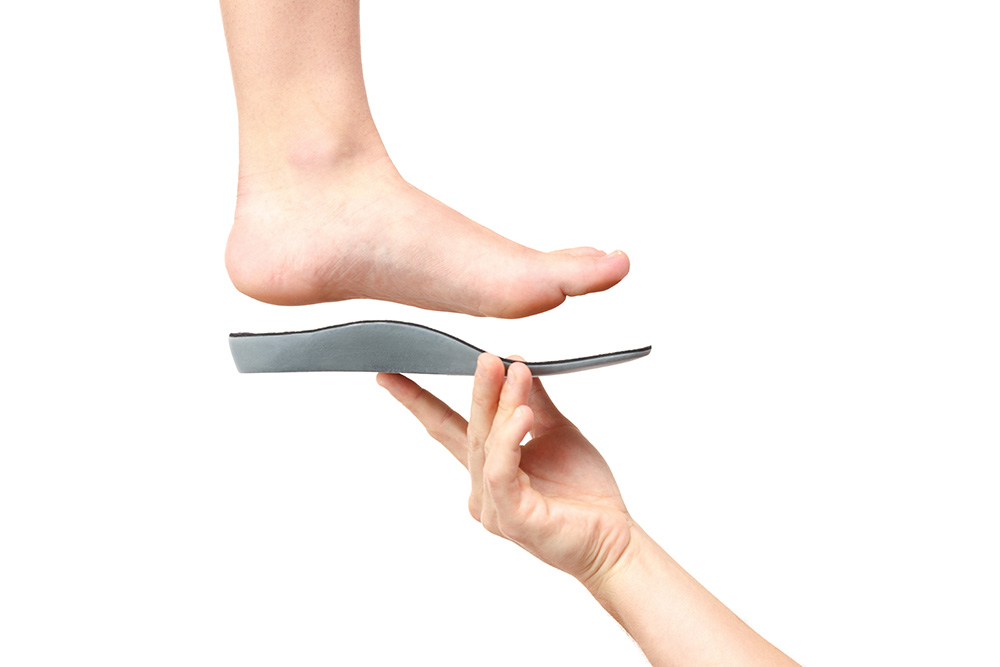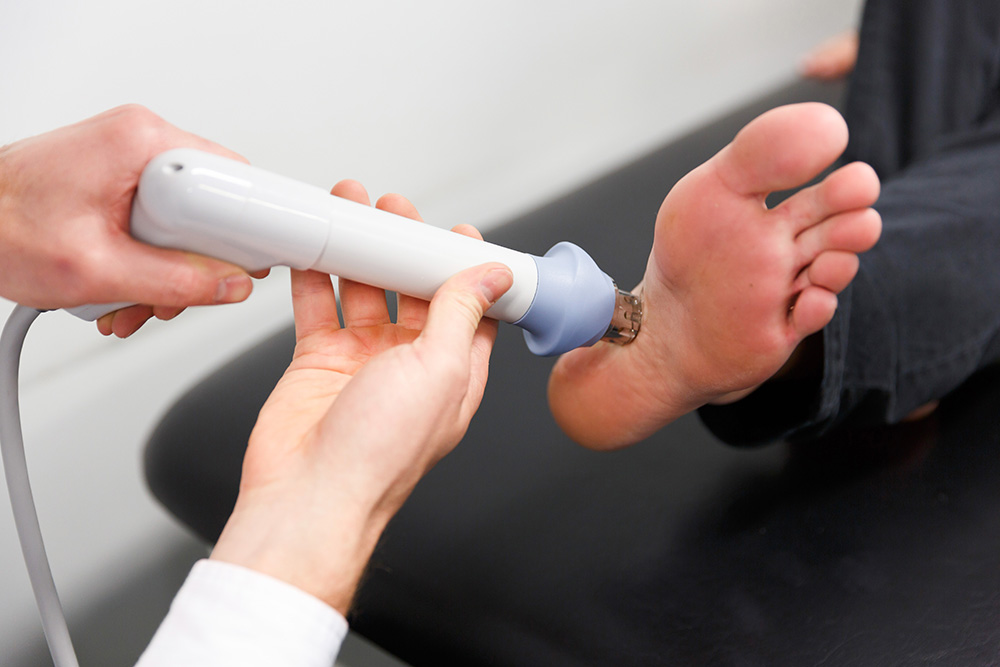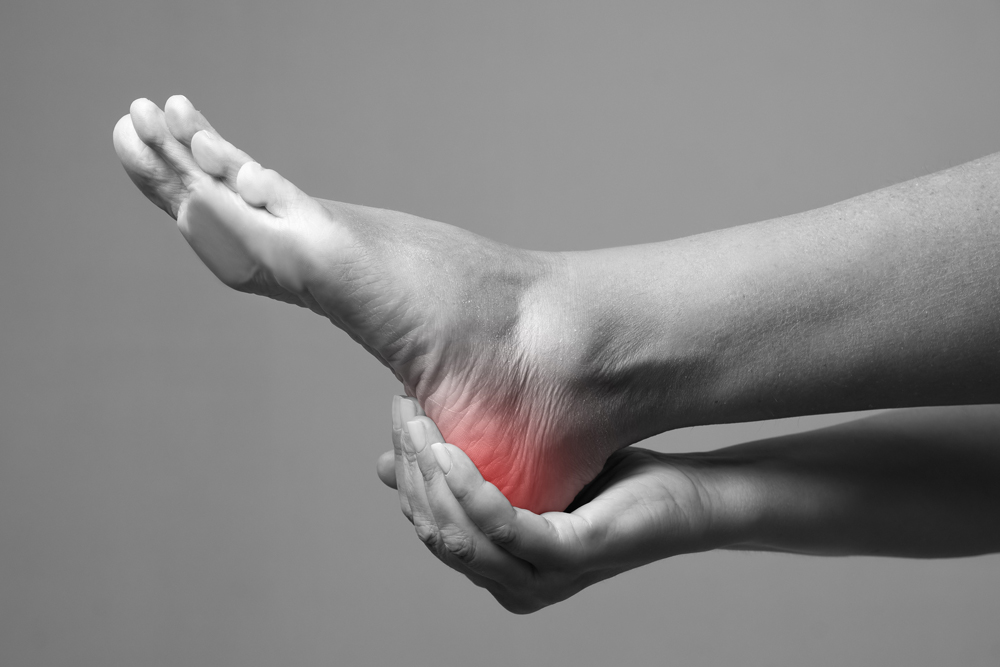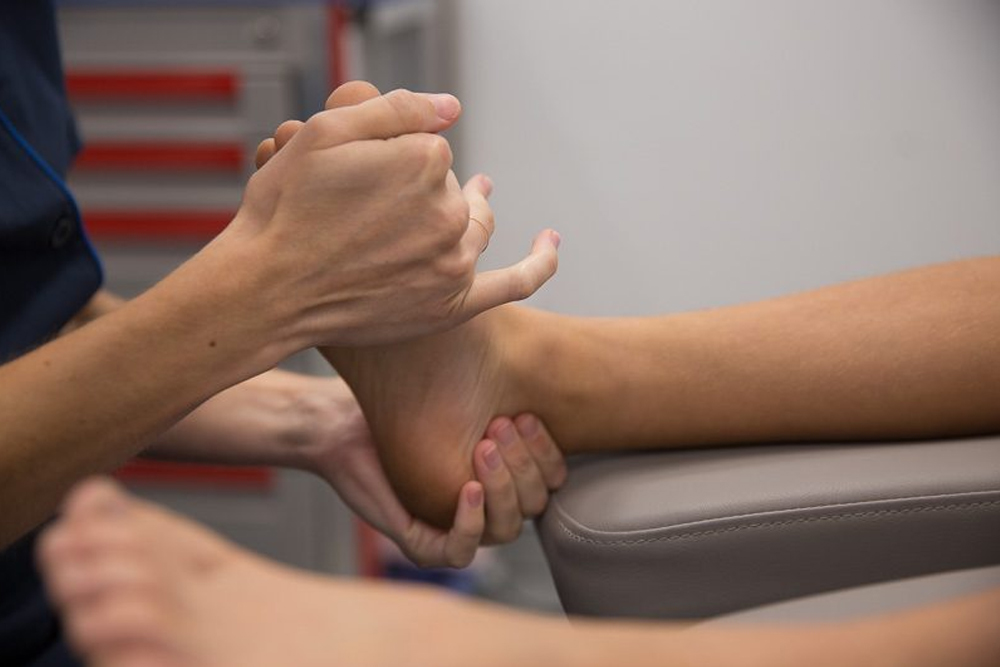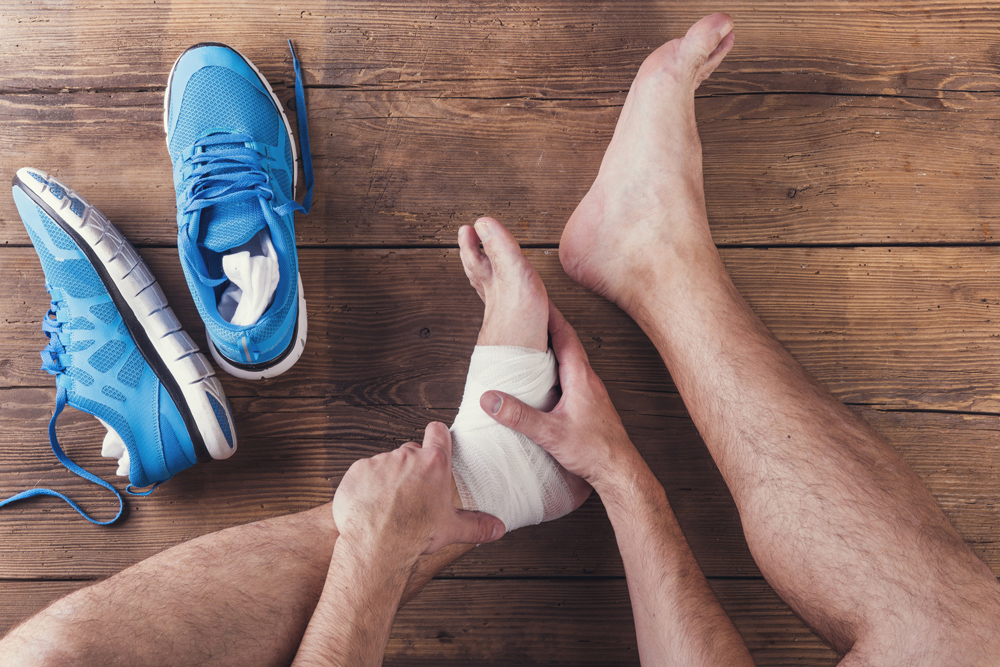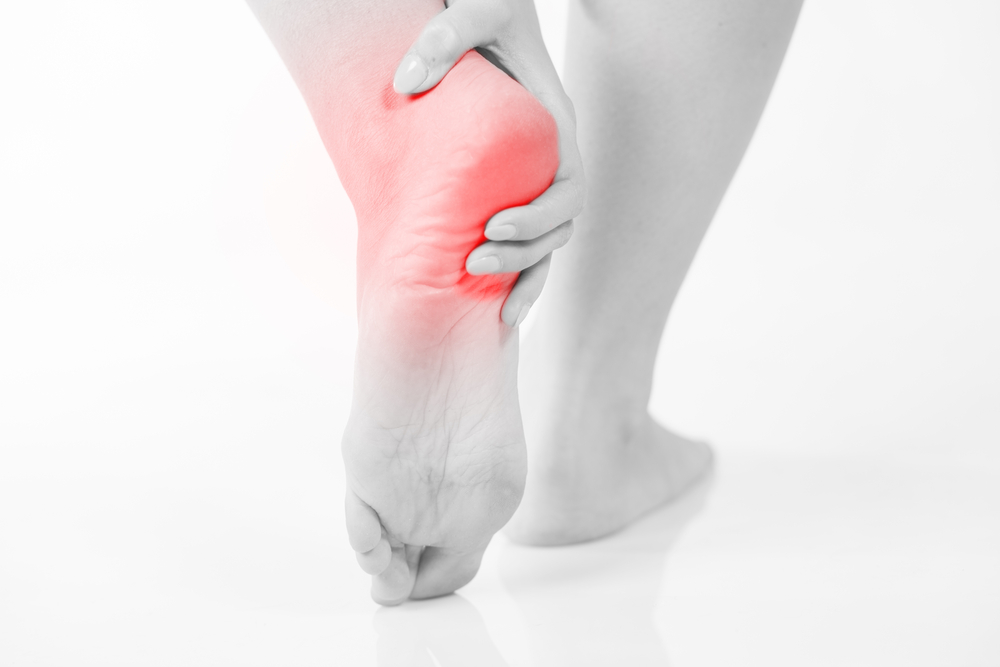
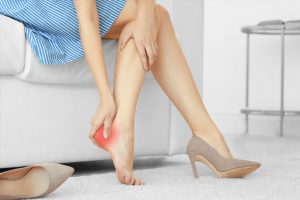
Do you have sore heels? If heel pain is interfering with how you move, how you feel and how you live, then it’s time to get help from My FootDr.
Plantar fasciitis, often referred to as heel spurs, is the most common cause of heel pain that we see and treat. It causes pain at the bottom and inner edge of the heel, and can range from mild to severe.
If you dread those painful first steps in the morning or when standing after resting, there’s a good chance that the cause of your heel pain may be plantar fasciitis – and that our podiatrists can help.
What Is Plantar Fasciitis?
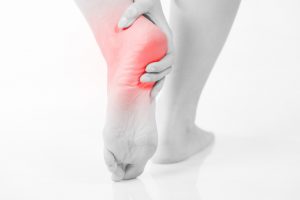
Take your finger and trace from the bottom of your heel, out to all five toes like a fan. This is your plantar fascia, a connective tissue that fans out across your arch and helps stabilise and support your foot while you walk, run and move. When the plantar fascia is overloaded and strained, it can become injured, inflamed and cause heel pain. This is known as plantar fasciitis.
How To Treat Plantar Fasciitis
Treating your heel pain must be uniquely tailored to your level of injury, symptoms, daily activities and life. We’ll look at what caused the original damage to your plantar fascia, and what factors may be placing additional strain on the tissue, thereby affecting your healing and recovery. By offloading the plantar fascia, it can heal and recover, while you stay on your feet and active.
We have a range of world-class treatments to help with this including shockwave treatment, custom foot orthotics, a custom stretching and strengthening program, footwear modifications, specially placed padding, night splints and more.
Next, we’ll also look at how we can prevent your heel pain from returning in the future, so you can stay comfortable, active and pain-free for the long run.
At My FootDr, we believe that healthy feet can lead to a better quality of life. Our team of podiatrists are qualified, board-registered and experienced. While together we’re the biggest podiatry team in Australia, giving us access to world-class, innovative heel pain treatments, each clinic works very much locally to offer the best care for their patients while building genuine relationships.
How Long Does Plantar Fasciitis Take To Heal?
Plantar fasciitis and the associated heel pain can last on and off for months and years if it is not well managed and allowed to heal. This is as you engage your plantar fascia with each step, so it never gets a real rest – unlike when you have your arm immobilised in a cast or sling. We know how restrictive and limiting having a cast or moon boot is to your life and work, so our treatment of plantar fasciitis does not involve these measures, unless absolutely necessary like in a plantar fascia tear or rupture.
How Do You Get Plantar Fasciitis?
Anything that overloads your feet and stresses your plantar fascia can result in plantar fasciitis. This includes:
- Spending long periods of time on your feet
- Going too hard, too fast during exercise
- Inadequately warming up your body before exercise
- Your foot biomechanics, including both flat feet and high arches
- Unsupportive or ill-fitting footwear
- Training on hard surfaces like concrete
- Age, which can diminish the fat pad beneath your heel
How To Know If You Have Plantar Fasciitis
You may feel:
- Sharp heel pain and discomfort at the bottom and inside of the heel, which may radiate up into the mid-arch region
- A ‘stone bruise’ type pain, like you are walking on a stone or a bony heel spur
- Heel pain that is worst during the first few steps in the morning, and on standing from rest
- Heel pain that is aggravated by physical activity and running
Heel Pain & Plantar Fasciitis FAQs
Are heel spurs and plantar fasciitis the same?
No, but they can produce similar symptoms. The two terms are often used interchangeably, though this is incorrect. A heel spur is a protrusion from the bottom of the heel bone from a deposit of calcium. Plantar fasciitis is damage to the plantar fascia tissue. You can have a heel spur but have no heel pain, so it should not be assumed that a heel spur is the cause of your heel pain as it is more often not the case.
Can I still run with plantar fasciitis?
Your podiatrist will advise you on this. It depends on a variety of factors, including the severity of your injury, the current level of support your fascia has from your orthotics and shoes, and more. We always work with our patients to achieve their goals, which may be to maintain regular running. As a general rule of thumb, however, unless your podiatrist says it is safe to do so, avoid running until your fascia has healed and you have recovered.
Is plantar fasciitis a form of arthritis?
No, plantar fasciitis is not a form of arthritis, but a soft tissue injury. To learn more about arthritis, click here.
Is walking barefoot bad for plantar fasciitis?
Most likely yes, especially if your foot type has played a role in the development of your plantar fasciitis. When you’re in bare feet, your arch and fascia have no additional support and so are more likely to be strained. This can worsen your injury and halt your progress. You also don’t have the shock absorption and cushioning that footwear and orthotics provide.
How to treat heel pain after running
If running has played a large role in your plantar fasciitis, then your treatment must focus on reducing the strain on your feet while you’re active. Custom foot orthotics are a great tool for this as they consider all of your unique foot biomechanics. The materials of your orthotics can also be tailored to best suit the demands placed on your feet from running.
Can knee pain cause heel pain?
Yes, the two can be linked. There are many ways this can occur. One way is from ‘guarding’ – meaning that you change the way you walk to try to limit the pain felt in your knee. This new way of walking can place different demands on your feet and on your fascia, past what it is normally used to. This may also occur if you have osteoarthritis or other painful problems with your knee that cause stiffness, thereby altering the way your lower leg moves when you walk.
How to prevent heel pain
- Keep your feet supported with custom orthotics and good footwear
- Warm-up adequately before physical activity
- Gradually increase your exercise intensity instead of diving straight in
- Treat any other lower limb problems as they arise
- If you start feeling an ache or niggle in your heel, understand the cause and treat it immediately
- Have an annual check-up with your podiatrist
Can diabetes cause heel pain?
Diabetes can cause painful sensations in the heels, though this is not usually plantar fasciitis. Diabetes often causes changes to the nerves which can produce feelings of pins and needles, tingling, numbness, burning and the like. Having a high BMI may increase your likelihood of developing heel pain due to the increased pressure on the heels.
Can shoes cause heel pain?
Yes. If you change from supportive, comfortable shoes that assist your plantar fascia to ones that are flat, hard and offer no support to the fascia, you may develop heel pain.
Is plantar fasciitis serious?
Plantar fasciitis can affect your ability to walk, stay active, perform work tasks and exercise, therefore yes it is serious. The severity of the injury can also worsen if it is left untreated – you may start with minor inflammation and damage to the fascia, which can progress to severe damage, a tear in the fascia, or the rupture of the plantar fascia.
What doctor do you see for plantar fasciitis?
Podiatrists are trained and qualified to treat all aspects of plantar fasciitis and have a comprehensive understanding of the associated lower limb function.
How to help relieve heel pain
To temporarily relieve heel pain before you can get in to see your podiatrist, rest your feet and avoid any activities that cause the pain to start. You can apply ice gently to help relieve any swelling. It is always best to see a podiatrist as early as possible to start your recovery and prevent your injury from worsening.
What can cause heel pain in children?
The cause of heel pain in your children’s feet can come from a variety of issues associated with both growing and everyday activities. One of the most common conditions that we see with children’s heel pain is Sever’s Disease, otherwise known as growing pains, a temporary condition that affects growing children. This is simple to treat, so if your child is experiencing heel pain, book an appointment with one of our podiatrists today.
What can cause heel pain in one foot?
Heel pain associated with plantar fasciitis often only affects one foot, however, it is not uncommon for both feet to show symptoms.
Does heel pain ever go away?
Yes, with proper care, rest and treatment, people with heel pain and plantar fasciitis often make a full recovery. To ensure the quickest recovery from heel pain, get in touch with your local My FootDr podiatrist who can assess your feet and tailor a well-suited treatment plan for you.


